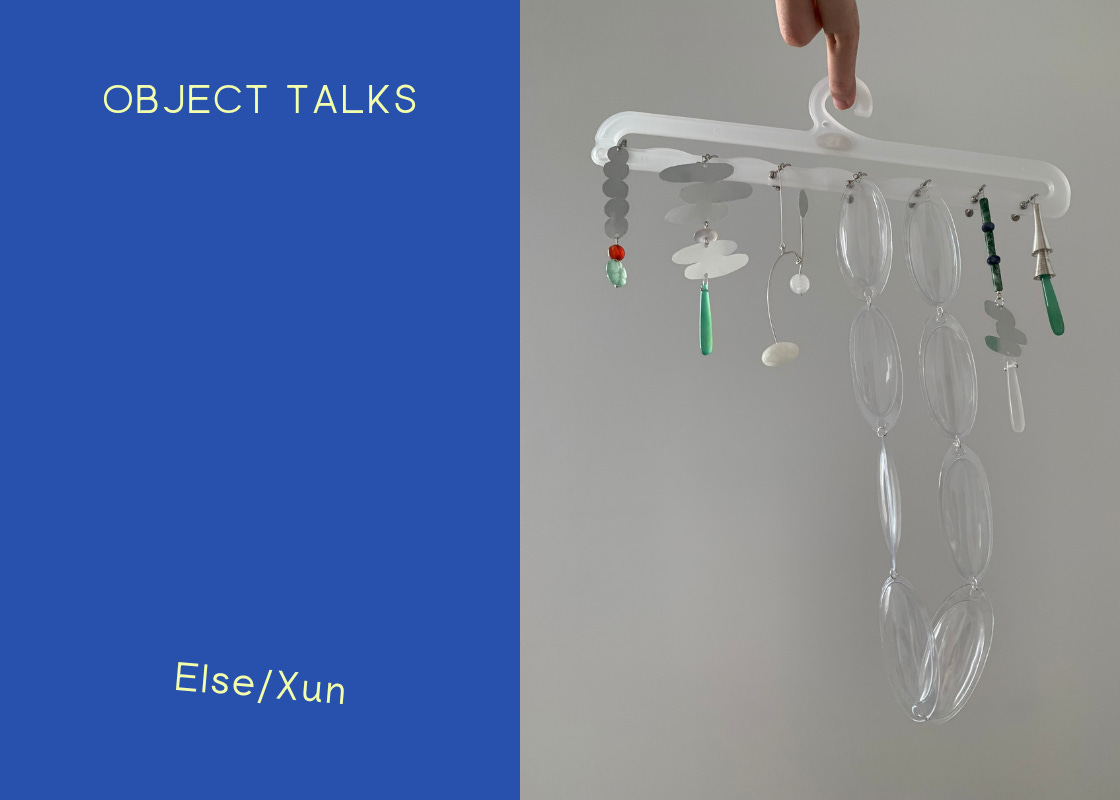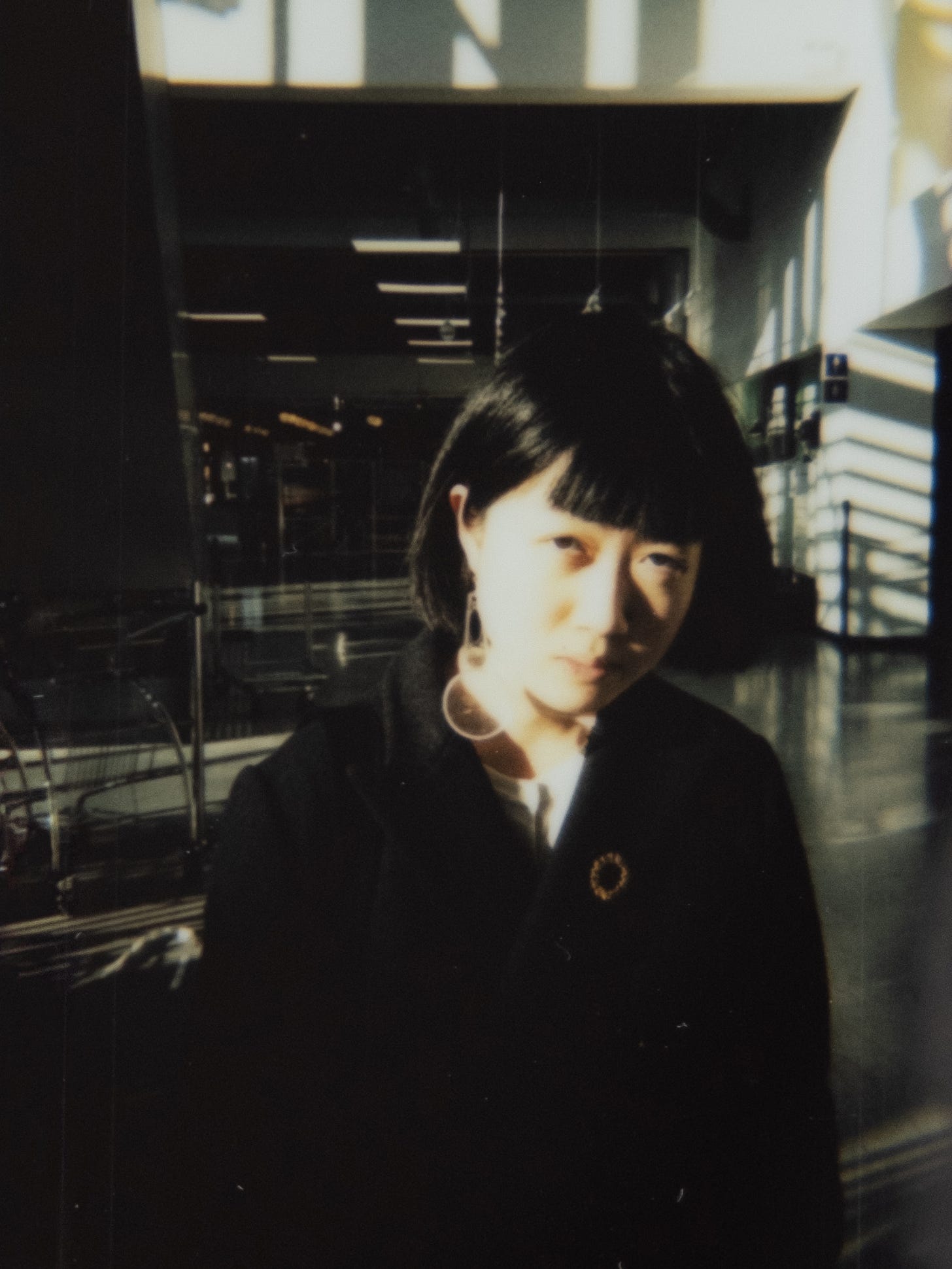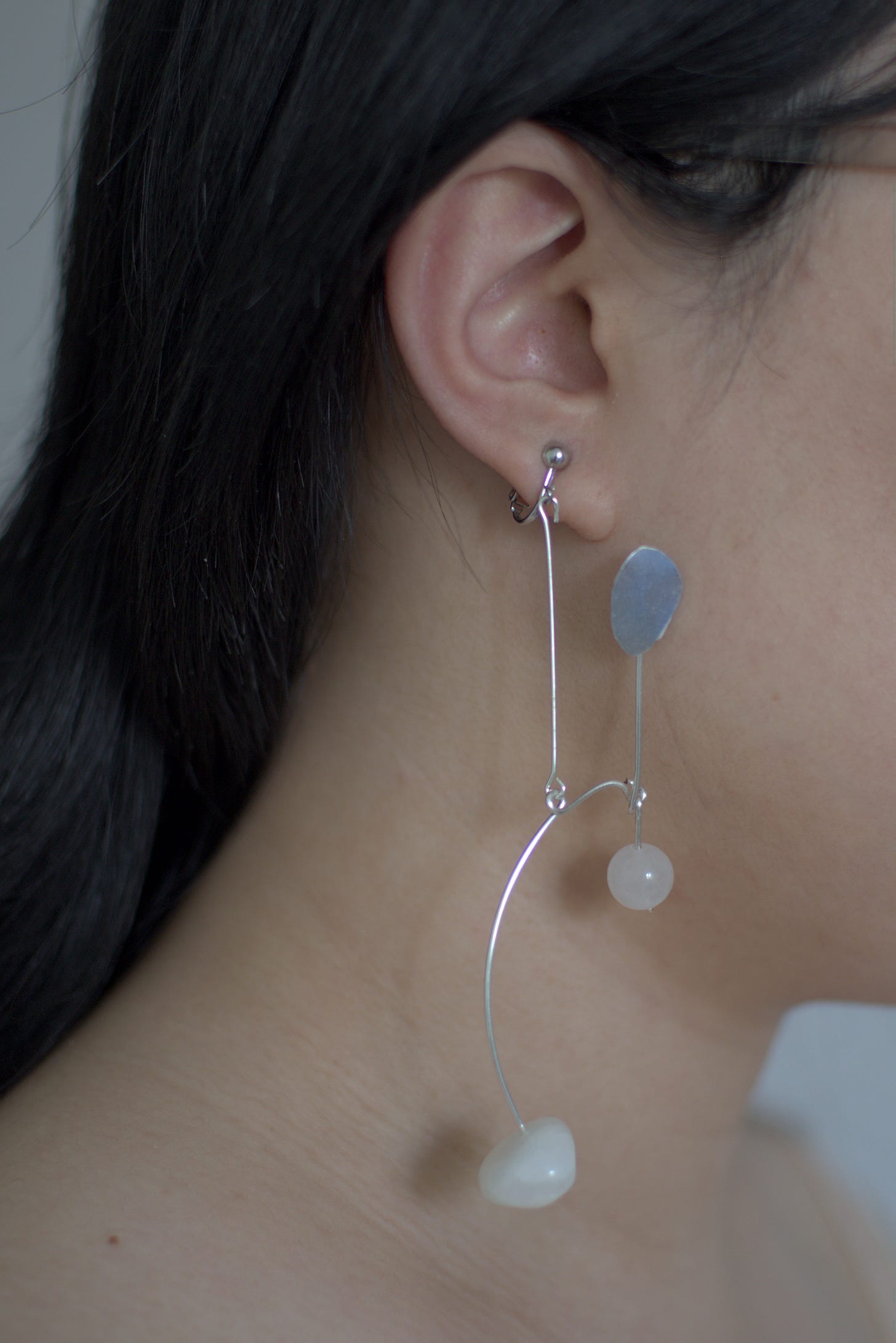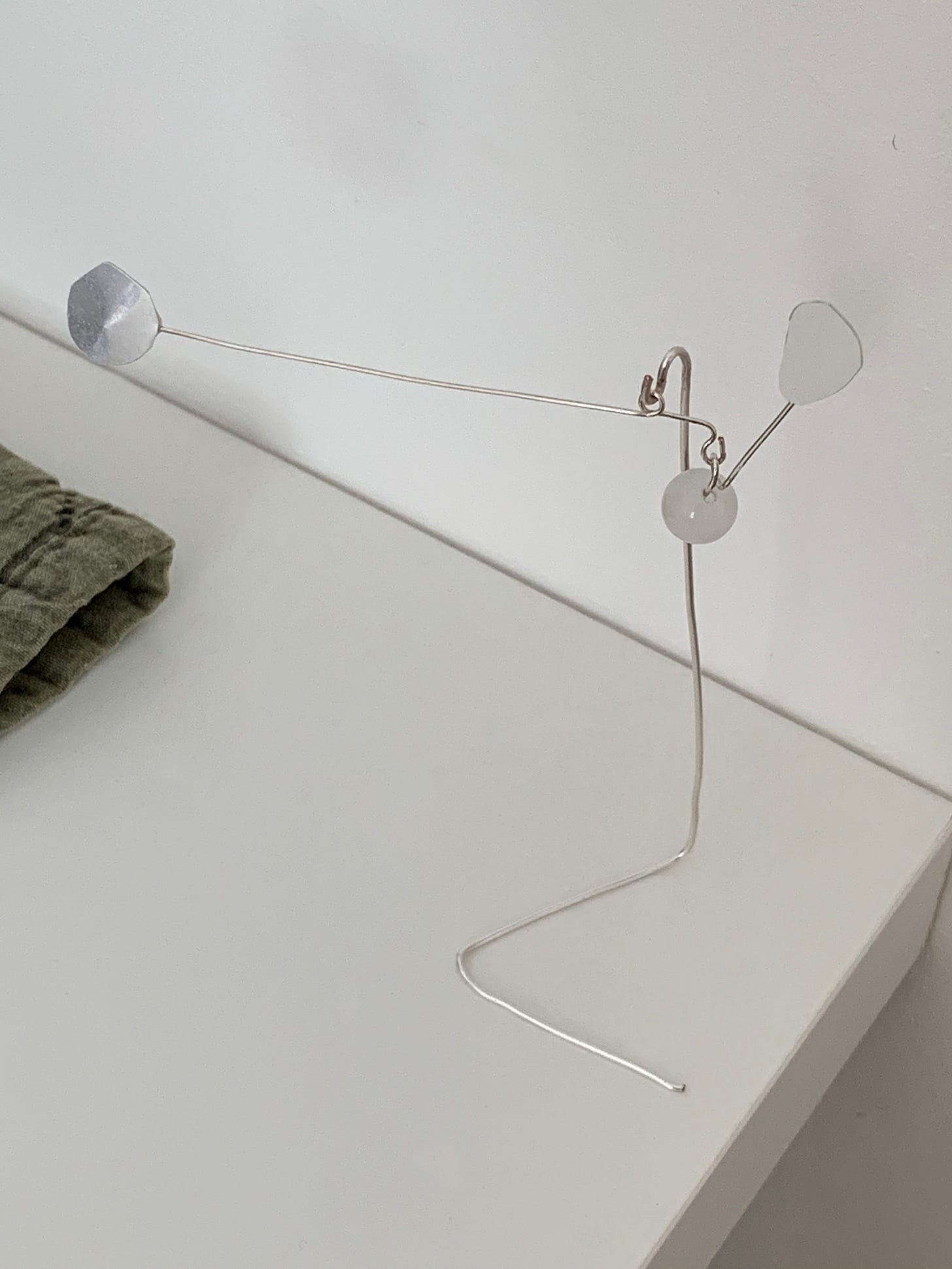Welcome to Objectively #32! Object Talks is a sub-series on conversations with creatives who work with objects—such as makers, collectors, and curators—about their practice.
I first discovered Else’s <thing thing archive> through Chantel’s (#13) studio market, and was drawn to the quality of lightness to their jewellery collection and interesting use of everyday objects. Wearing a book binding ring as a ring… who would have thought. Read on for how they got into the craft, their idea for logging ‘slow reviews’, and what they have gathered from fashioning found objects into earrings.
“A lot of things are wearable, as long as they stay on the body.”
Else/Xun is a researcher and artist based in London with a research interest in relationality, support and derivative practices. When they are not researching they make low-tech and fragile wearables (mostly earrings) with metal, jade and other stones, and found materials. This is an obsession that they are still trying to make sense of.
Your jewellery has this lightness to them, and I think it’s interesting you refer to them as “fragile”. Can you share about what inspires you?
Generally speaking, many of my inspirations might have come from the inherent or inherited nature of the materials that I work with: the hardness of metal, the shape of stones, the position of holes on mass-produced beads, and so on. They have a significant influence on my works, as I make and build around the things that I have found and gathered. I’m drawn to natural forms too, especially stones.
What got you into jewellery-making?
Looking back, almost all of the jewellery works that I made in the beginning were made with someone in mind, as gifts for friends and family. The reason to make something by myself was to have thoughtful and special (and affordable) gifts for people I cared about.
The reason to start making wearables was probably to make something that they could actually use, and jewellery was among the things that was easier to learn. You can hang a lot of things on your ear once you learn how to open a jump ring.
This state of gift-making, of making something as I think of someone, has been with me for a long time, and has remained intuitive and unarticulated. When I think about it now, it has been quite important to me as it is usually the need to make gifts that motivates me to explore things and learn skills, which feed back into my other works.
The materials used in the works were probably another reason that I started to make jewellery. Making jewellery gave me an excuse to gather them.
Can you share more on your process of finding or sourcing material to work with?
I like to gather things, from stones and pebbles to discarded packaging and metal parts, and old jewellery that I upcycle from. Since I work from readymade materials, the process of finding, sourcing and keeping (not throwing away, that is) materials usually involve visualising how I might use them later in my work, and many of them might not be intended for use in jewellery in the first place.
Places that I visit for materials have included beaches, construction sites, second-hand shops and vintage markets. I also buy materials that I know I will use a lot from a certain Chinese online shopping platform that generally has a wider variety of everything and some really interesting objects; the stand that I often use to show my works, for example, was designed by a seller to display tea bowls and cupcakes.
They are kept in my home back in China and shipped to London once or twice a year along with other things sent to me from home, so what I buy will more or less determine what I make in the next six months at least. There are a lot of uncertainties here, and I have hoped to develop a more stable and flexible approach to managing supplies.
Some of your work are recognisably inspired by mobiles — what about them are you drawn to?
This started with gift-making, too. I didn’t know I was drawn to mobiles before I made them as gifts for my partner. I learned to make them from online tutorials and images of mostly Alexander Calder’s works.
As I made them I became aware of their movements, which reminded me of looking at trees in the wind, with their parts moving differently: stems, branches, leaves, in their own ways but still in relation, in an entirety. I guess I was drawn to this movement, or the relationship between a multiplicity of movements, which is part of what my research is about, but I definitely did not expect it to seep into my making practice. It felt like a new form of knowledge to me, a material and bodily understanding of something that I have been interested in for a long time.
I love the way you use commonplace yet unexpected objects. How has thing thing archive influenced the way you look at everyday things, or perhaps vice versa?
I have always struggled to find rings my size that are not custom made, and the bookbinder ring you mentioned was the first readymade ring that fit on my finger. It has been one of my most frequently used jewellery in the past two years. I tend to try everything I can on my body. A lot of things are wearable, as long as they stay on the body.
I’m not sure which comes first, thing thing archive or the way I look at everyday things, but making objects with function has probably made me more attentive to other objects - their function, intention, and materiality. I’m interested in how objects guide and limit movement around them and suggest their ways of use. I’m also fascinated by things that are not used in the ways intended, and how users adapt, design, shape, and live with everyday objects in a culture, landscape or locality.
Tell us about a dream project that’s on your mind.
I’ve been thinking of writing (or gathering?) slow, short reviews on things regularly over a period of time. Taking and keeping logs of how they change and age, say in a month, a season, a year, or a few years.
When I make the decision to buy something, it is usually important for me to know what it is like after a long period of use, how long it can last, and with what kind of care and maintenance. Yet it’s difficult to find reviews like this, especially when it comes to everyday objects — many of them are written right after the purchase.
I have owned things that are unexpectedly short-lived, and feel that reviews written over time can help one to choose things that last longer. Sounds like a project that requires a lot of commitment… maybe I’ll do this when I have time.
Before you go, who’s another object-creator that you enjoy or find inspiration in? If given the chance, what’s one question you’ll ask them?
Weiyi Li is one of my early influences who more or less shaped the way I look at the functionality and materiality of objects. I’ll probably ask how she organises her things.
Check out thing thing archive, and follow Else’s explorations on their Instagram and website.
Catch up on recent features:
Who would you like to hear from on Objectively?













